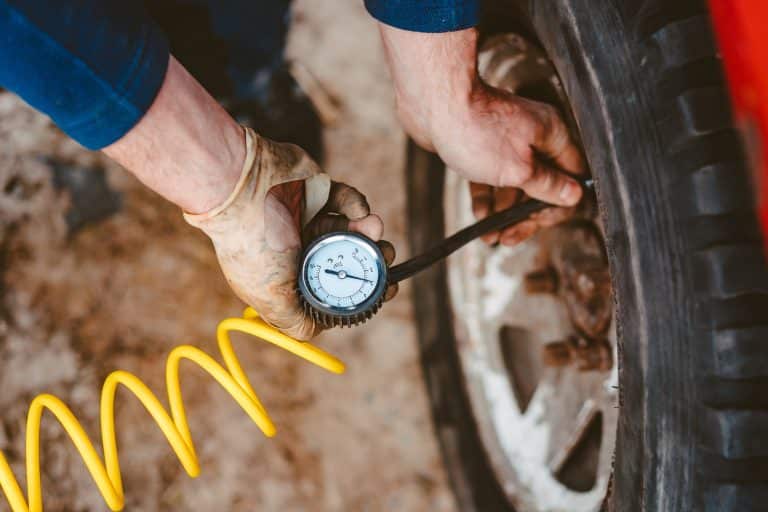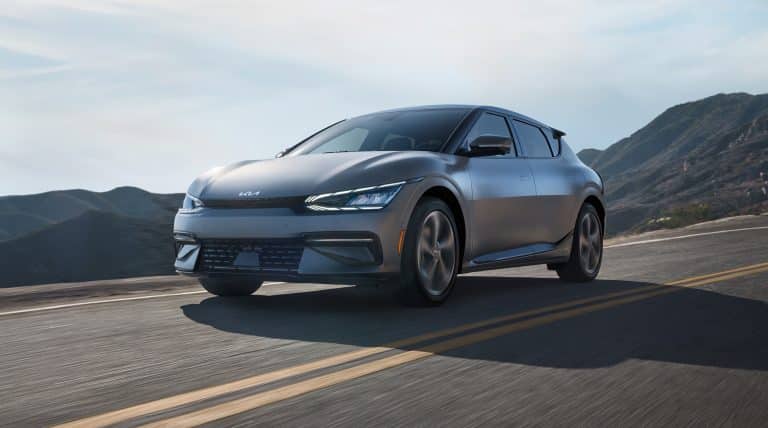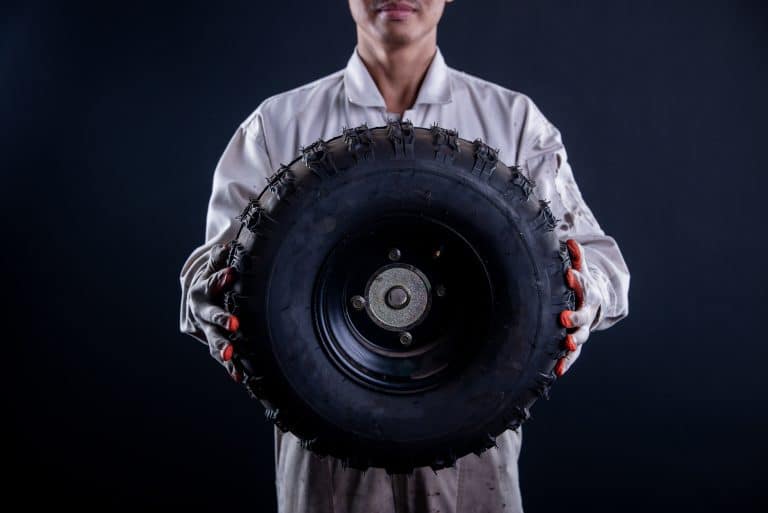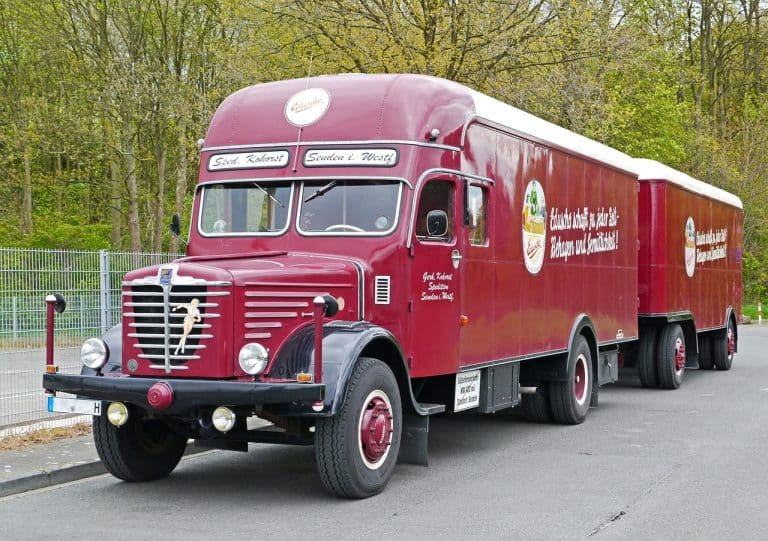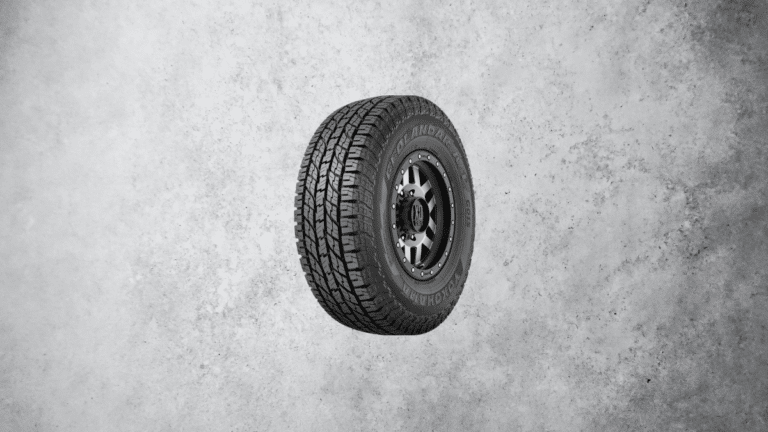The 10 Best Tires for Driving in Rain (2024 Updated)
Finding tires for rain is something you cannot take lightly. Especially if the area where you live receives lots of downpours. Continuous rain reduces the road’s friction, leaving it to the tire to generate all the traction and grip that is needed to keep your vehicle stable.
That’s precisely what the best wet weather tires do. They keep your vehicle’s stability intact regardless of how much water is there on the road. Even in deep puddles of water, you can count on these tires to provide enough traction for fast and worry-free driving.
These tires also reduce the risk of hydroplaning. Hydroplaning is when enough water accumulates beneath your tire’s tread to cause it to lose traction with the road. Whether it lasts for a second or a longer time frame, hydroplaning could lead to a crash.
In this article, we’re going to look at the ten best tires for rain. The sooner you buy these tires and install them in your vehicle, the earlier you can drive worry-free on wet roads. We’ll also answer common queries people have about wet weather tires.
Top 10 Best Tires for Driving in the Rain
- Vredestein Quatrac Pro
- Continental ExtremeContact Sport
- General AltiMAX RT45
- Hankook Ventus V2 Concept2
- Pirelli P4 Season Plus
- Michelin CrossClimate 2
- BFGoodrich g-Force COMP-2 A/S Plus
- Michelin Pilot Super Sport 4S
- Goodyear Assurance WeatherReady
- Cooper Discoverer All-Season
#1. Vredestein Quatrac Pro
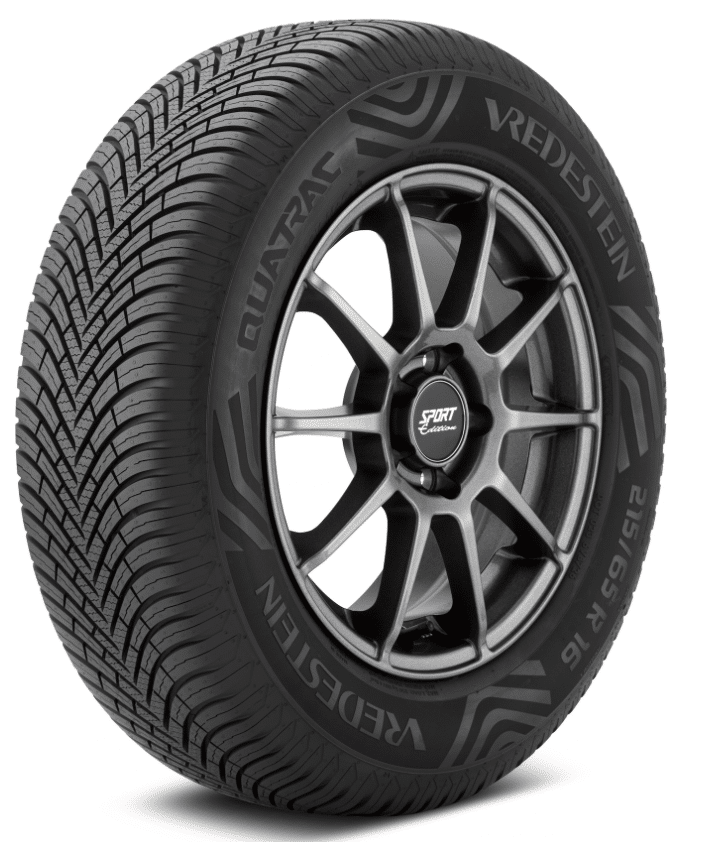
Price Check
Check the price of this tire at the following retailers:
Amazon TireRack DiscountTire PriorityTire SimpleTireDon't know the correct size tire to purchase? Start here!
The Vredestein Quatrac Pro is my top pick for several reasons. It features many improvements over its predecessor, the world-renowned Quatrac 5. This tire offers stronger traction on wet surfaces, ice, and snow. Its handling is also one step above the model it replaced.
A close inspection of its tread area reveals an asymmetric tread pattern. Made of silica and resin, the unique tread design provides this tire with enhanced road-gripping capabilities and a precise turning mechanism. You can thus count on this tire to provide you with a better drive.
This tire also does a fine job of resisting hydroplaning. A rib within and inside the shoulder has created full circumferential channels for any water, slush, or mud to drain out of the contact patch. That’s not all. The rib also features adjacent notches to boost this tire’s grip.
You can trust the Quatrac Pro to withstand quite a lot of abuse as well. Mainly because of its exterior polyester layer that supports two steel belts. But also because of the polyamide underpinning. Both of them help reduce the wear and tear to the tire at breakneck speeds.
I was also impressed with the warranties on offer. There are three of them, including a 12-month (or for the first 2/32”) wear warranty. Then comes the eight years or 40,000 miles workmanship and materials warranty. And you also get a 30-day trial period.
Pros
- Impressive wet-weather performance
- Above-par handling and steering control
- Minimal road noise
Cons
- Not meant for sports cars and smaller vehicles
#2. Continental ExtremeContact Sport
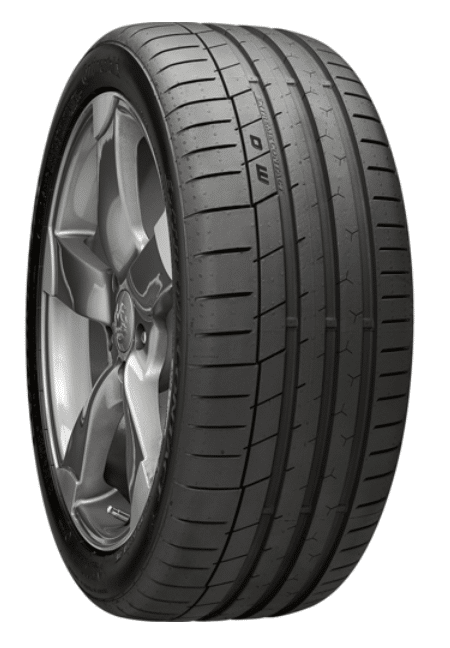
Price Check
Check the price of this tire at the following retailers:
Amazon TireRack DiscountTire PriorityTire SimpleTireDon't know the correct size tire to purchase? Start here!
The Continental ExtremeContact Sport offers the best of both worlds. On the one end, it has an advanced summer tread compound with the manufacturer’s patented +Silane technology that enables it to provide extreme grip and traction on both dry and wet road surfaces.
On the other end, it’s backed with Continental’s exclusive SportPlus Technology. One which gives this tire slick steering response and feel while also elevating its cornering stability to the level of a UHP summer tire. This is one area where this tire outclasses the best in its category.
The addition of circumferential grooves means you can count on this tire to resist hydroplaning. Two inner high-tensile steel belts give the tire the stability that will help it retain its shape at high-speed driving. Continental has also added maintenance indicators to help you check the tire’s health.
These indicators do two things. The first of which is giving you a close overview of how fast (or otherwise) the tire is wearing. The second indicator tells you whether the tire has the depth needed to handle dry or wet road conditions. These indicators are similar to what you find on high-price tires.
Keep an eye on the ‘DW’ marking to know when the tire needs replacement. The W (wet) marking will wear first, followed by the disappearance of D (dry). Once both the indicators aren’t visible, it’s time to order a new set. If they disappear in the first 30,000 miles, claim the tread warranty.
Pros
- Very impressive wet grip and traction
- Excellent cornering stability and performance
Cons
- Not for snowy or icy roads
#3. General AltiMAX RT45
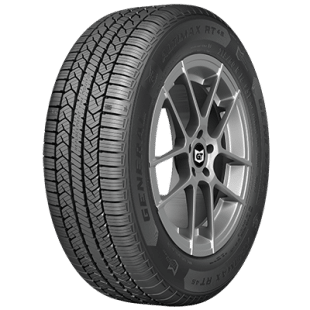
Price Check
Check the price of this tire at the following retailers:
Amazon TireRack DiscountTire PriorityTire SimpleTireDon't know the correct size tire to purchase? Start here!
On the more affordable side of things, there’s a model from General. The AltiMAX RT45 is an upgrade over the popular RT43, meaning there are some improvements. One of the many is the performance in wet conditions.
To achieve that, General utilized its all-season compound for the AltiMAX RT45. The result of this is a tire that can handle colder temperatures and perform well. While this is primarily for winter, it doesn’t struggle on wet roads, especially in lower temperatures.
The traction in these conditions is backed by several features in the tread design. Looking at the pattern, you’ll notice countless sipes across the tire aimed at helping with performance in these slippery conditions. They act as claws and help improve traction on damp surfaces.
Wet performance isn’t just about damp roads because you may need to drive over standing water. This is where the grooves come into play. The design features circumferential grooves that work with the lateral ones to help the tire provide excellent aquaplaning resistance.
The best way to keep a tire performing for a long as possible is to keep it healthy, which is where RTM and VAI come into play. General implemented Replacement Tire Monitor and Visual Alignment Indicators to the AltiMAX RT45 so that you can keep an eye on the tire’s health.
Pros
- Very good overall performance
- Delivers a comfortable ride
Cons
- There are quieter options in this category
#4. Hankook Ventus V2 Concept2
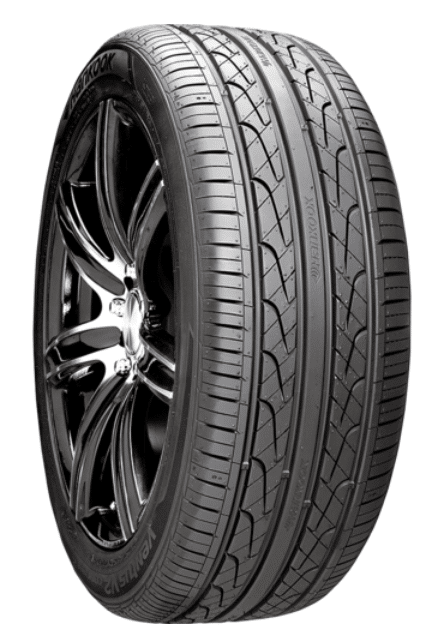
Price Check
Check the price of this tire at the following retailers:
Amazon TireRack DiscountTire PriorityTire SimpleTireDon't know the correct size tire to purchase? Start here!
The Hankook Ventus V2 Concept2 does many things at once. The presence of high amounts of silica in its tread compound enables it to offer excellent dry and wet traction. Its directional tread pattern and continuous center rib reduce the braking distance at high speeds.
Both also help this tire offer an above-average ‘pick’ and quick steering response. That isn’t to say that this tire is made for driving enthusiasts, who might be put off by the response its softer sidewalls give. Still, if you’re like most drivers, you won’t find any faults with its steering response.
Wet traction is an area this tire doesn’t divide opinions in. Hankook has equipped it with a silica-infused compound that, together with the four circumferential grooves and the V-tread pattern, does an excellent job of removing water from underneath the tire’s footprint.
Multiple sipes and 3-D tread patterns help it offer average performance on snow and ice. Despite their presence, this tire remains an all-season tire. You shouldn’t expect it to be a world-beater in rough winter weather. If you do, you’d be putting your vehicle’s stability in danger.
Hankook has done really well to reduce unwanted road noise with this tire. A Noise Control Block ensures that minimal road noise gets to those sitting in the vehicle’s cabin. The elimination of any unnecessary road noise means you can expect this tire to offer a comfortable driving experience.
Pros
- Offers an ultra-quiet driving experience
- Backed with a 45,000-mile treadwear warranty
Cons
- Cornering could have been softer
#5. Pirelli P4 Season Plus
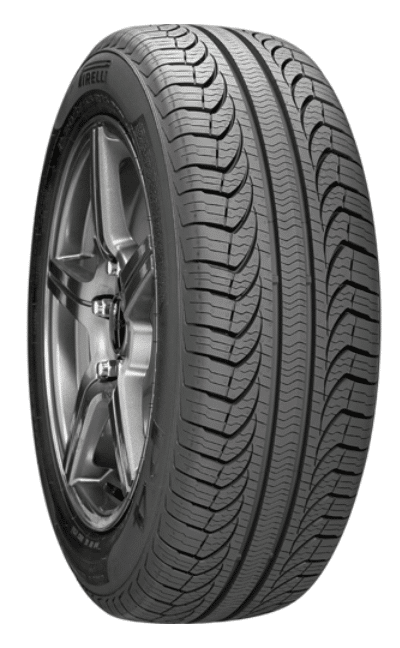
Price Check
Check the price of this tire at the following retailers:
Amazon TireRack DiscountTire PriorityTire SimpleTireDon't know the correct size tire to purchase? Start here!
The Pirelli P4 Season Plus is rightly dubbed as one of the best touring tires right now. That couldn’t have been the case if its wet performance was poor. An optimized tread design and two central longitudinal grooves help this tire deliver top-of-the-category performance on slippery roads.
Here’s why I’m so sure. The optimized tread design helps this tire retain its dry-weather grip, but in damp conditions where other all-season tires suffer. As for the longitudinal grooves, they offer any accumulated water with all the space it needs to escape the tire’s footprint.
Wet weather performance isn’t the only box this tire ticks. Its road noise, or the lack of it, is another reason why you may want to buy this tire. In fact, having tested some of the quietest tires on the market, I could say with confidence that the Pirelli P4 is right up there with some of the best in this category.
Pirelli also entices potential customers by using a silica-rich tread compound. The good thing about silica is that it improves grip, especially in rain. It also puts a dampener on the road noise. Silica softens the ride without compromising on handling, too, a combo that you don’t get from other tread compounds.
Unfortunately, the P4 also has its fair share of shortcomings. The first of which is size ability. This tire is available in a limited number of sizes, making it difficult to find a tire with a specific size. Secondly, some users complain about rocks getting stuck in its grooves and remaining there for long periods.
Pros
- Long-lasting 90,000-mile treadwear warranty
- Excellent fuel efficiency thanks to low rolling resistance
Cons
- Available in only a few sizes
#6. Michelin CrossClimate 2
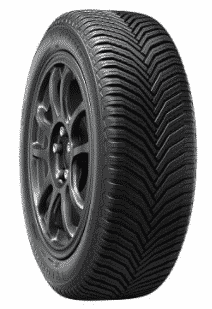
Price Check
Check the price of this tire at the following retailers:
Amazon TireRack DiscountTire PriorityTire SimpleTireDon't know the correct size tire to purchase? Start here!
Michelin has pulled out all the stops to make CrossClimate 2 one of its best tires for rain. It has equipped this tire with its proprietary Thermal Adaptive tread compound, which has enhanced its grip on both dry and wet surfaces. The dependable tread compound has also shortened the tire’s braking distance.
Aside from enhancing the Cross Climate 2’s traction, the tread compound also helps it remain soft and pliable in winter. This ensures that as the temperatures grow down, the tire’s traction and the grip don’t follow suit. You can thus expect this tire to keep you safe in light-snow conditions.
Then comes the tire’s directional tread pattern. Featuring V-Ramp chamfers, the tread pattern has provided the tire with biting edges. This helps the tire latches onto wet surfaces. What’s more, the biting edges also disconnect, letting the tire offer the same supreme grip on dry roads.
You might find it good to note that this tire comes with Michelin’s PIANO Noise Reduction Tuning Technology. As the name implies, the technology helps minimize road noise as much as possible, ensuring a comfortable ride. The noise remains down regardless of the speed of your vehicle.
On top of everything else, Michelin has supplemented the tire’s tread with several of its tread wear indicators (TWIs). The first of which is the narrow rubber bars that let you measure the remaining tread depth. Once the tire hits zero or minimal tread depth, the rubber bars will become visible.
Pros
- Highly reliable wet weather performance
- Compatible with a wide range of vehicles
Cons
- Wear life is relatively short
#7. BFGoodrich g-Force COMP-2 A/S Plus
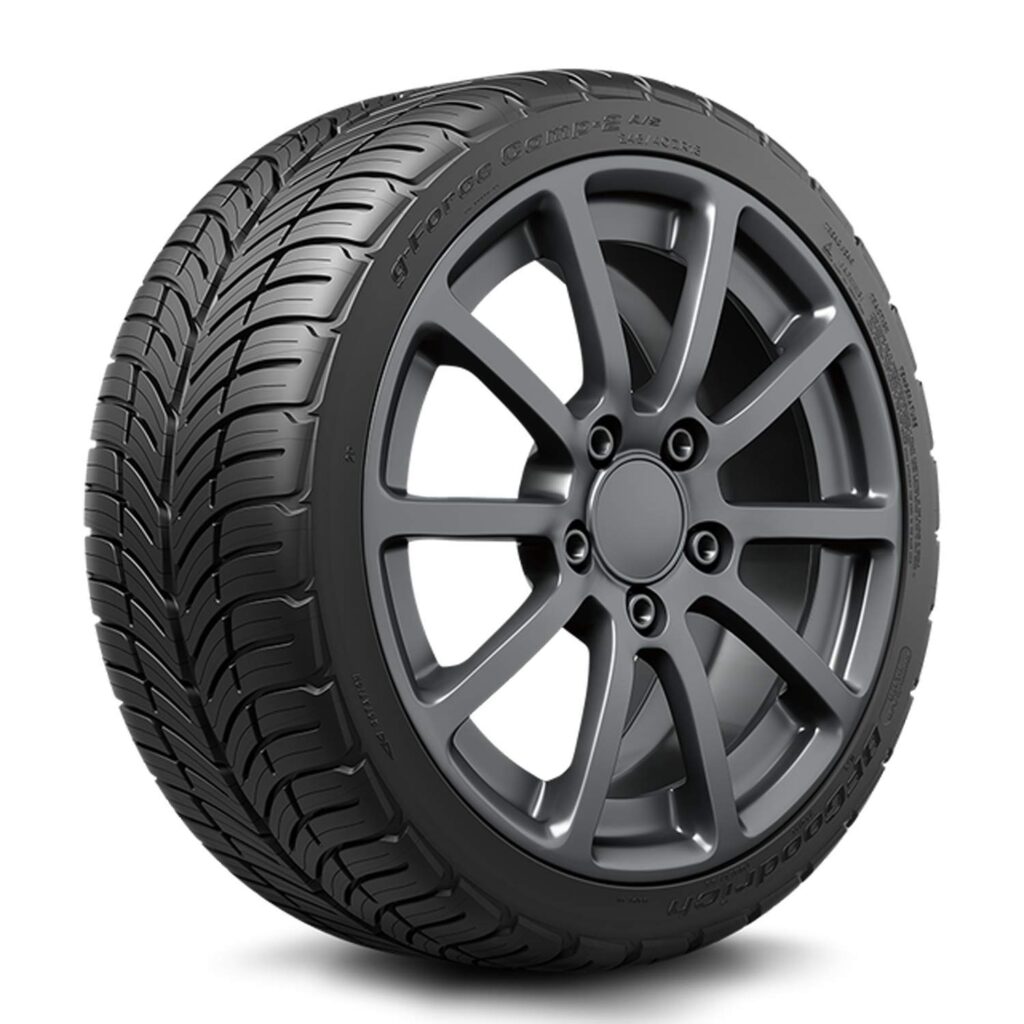
Price Check
Check the price of this tire at the following retailers:
Amazon TireRack DiscountTire SimpleTireDon't know the correct size tire to purchase? Start here!
On the performance side of things, there is a model from BFGoodrich that’s an excellent choice for driving in rainy weather. The g-Force COMP-2 A/S Plus is an all-season model, offering excellent performance in multiple conditions.
Considering that we’re talking about an all-season model, you can probably guess what the most important feature of the g-Force COMP-2 A/S Plus is. It’s an all-season rubber compound designed to enable the tire to perform in wet conditions as well as colder temperatures.
Another feature that helps the g-Force COMP-2 A/S Plus with wet performance is the tread pattern. The tire has a directional design, offering many advantages, including its water channeling properties. As a result, the tire’s aquaplaning resistance is excellent.
The handling and dry performance are backed by a few features in the design. BFGoodrich implemented its g-Control Sidewall Inserts, which work with the Performance Tread Profile, allowing the tire to deliver high levels of traction and offer dynamic handling characteristics.
Another feature that should be mentioned about the g-Force COMP-2 A/S Plus is the Dynamic Suspension System. Like many of the other features, it offers multiple advantages, and the most notable one is that it keeps the tire controllable even when you start approaching the limits.
Pros
- Very good balance between overall performance and price
- Solid snow performer
Cons
- The noise levels aren’t too impressive
#8. Michelin Pilot Super Sport 4S
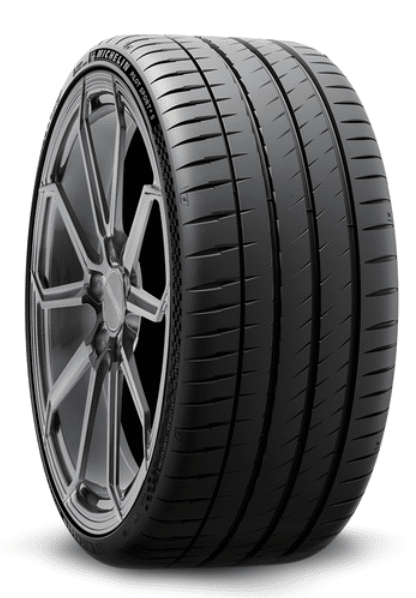
Price Check
Check the price of this tire at the following retailers:
Amazon TireRack DiscountTire PriorityTire SimpleTireDon't know the correct size tire to purchase? Start here!
At the time of its launch in 2017, the motorsports community was very excited. The Pilot Super Sport 4S’s on-road performance didn’t do anything to dampen their enthusiasm. In fact, it has cemented this tire’s reputation as a worthy successor of the uber-popular Pilot Super Sport.
This tire’s wet performance is as fantastic as its UHP. Mainly because of Michelin’s decision to equip its tread’s inner part with “silica and functional elastomers”, which enhance its traction on dry roads. The tread’s inner part is the reason why this tire’s braking distances in rain are so short.
The remaining credit for its outstanding behavior in rain goes to the tire’s asymmetric tread pattern. Or, more specifically speaking, the asymmetric tread pattern’s inner part. Unlike the outer part, which is more suited for summer conditions, the inner part is geared more toward rainy conditions.
You can also trust the tire to retain its shape during high-stress conditions. An inner belt made from a nylon-and-aramid-fiber blend ensures that the contact patch retains its size when you’re moving your car around at breakneck speeds. The inner belt is also responsible for its steering being ultra-responsive.
Michelin didn’t forget about aesthetics when designing this tire. The Pilot S has a velvety ‘Premium Touch’ technology logo, making its sidewall more pronounced. Also, there is a subtle (but noticeable) rim protector strip, a must-have feature considering the tire is available in 19- and 20-inch forms as well.
Pros
- Traction on slippery roads couldn’t be any better
- Exceptional cornering grip and stability
- Better than expected treadle
Cons
- Pricey
#9. Goodyear Assurance WeatherReady
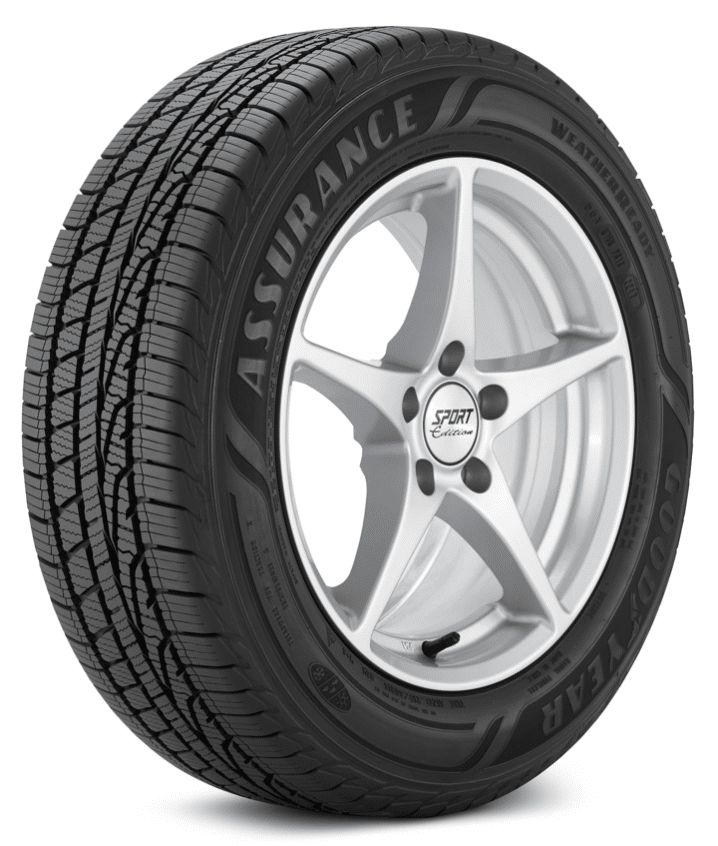
Price Check
Check the price of this tire at the following retailers:
Amazon TireRack DiscountTire Goodyear PriorityTire SimpleTireDon't know the correct size tire to purchase? Start here!
Goodyear is one of the few brands that aim to offer decent performance at a pocket-friendly price. The US-based brand has plenty of tires in its lineup, but none of them can rival the Assurance WeatherReady when it comes to performance on dicey, slippery roads.
Driving in the train with the tire gives you the feeling of being in total control. The tire’s unique tread design as well as biting edges help it retain its grip in water puddles. The biting edges are strategically placed throughout the tread area, boosting this tire’s performance in wet conditions.
Snow performance is acceptable enough but you cannot compare this tire to dedicated snow tires. Dry performance is also great, and unless you get carried away, the cornering grip and stability will also be impressive. Similar is the case with its steering response, which is excellent for an all-season tire.
You won’t have any complaints about this tire’s comfort and noise. It drivers seamlessly and lets no vibrations in the cabin, thanks to the tread compound that smoothens out road imperfections. Noise levels are also on the lower side when you consider that this tire is available at an affordable price.
The only area where I’d hope to see an improvement is treadlife. Even when you keep the tire away from the off-roads, it will wear out quite soon. Fortunately, Goodyear has offset this drawback by backing this tire with a 6-year (60,000 miles) treadlife warranty and an equally long workmanship guarantee.
Pros
- Astounding traction and braking power on wet surfaces
- Available at a pocket-friendly price
- Back with a six-year tread warranty
Cons
- Wears out quite soon
#10. Cooper Discoverer All-Season
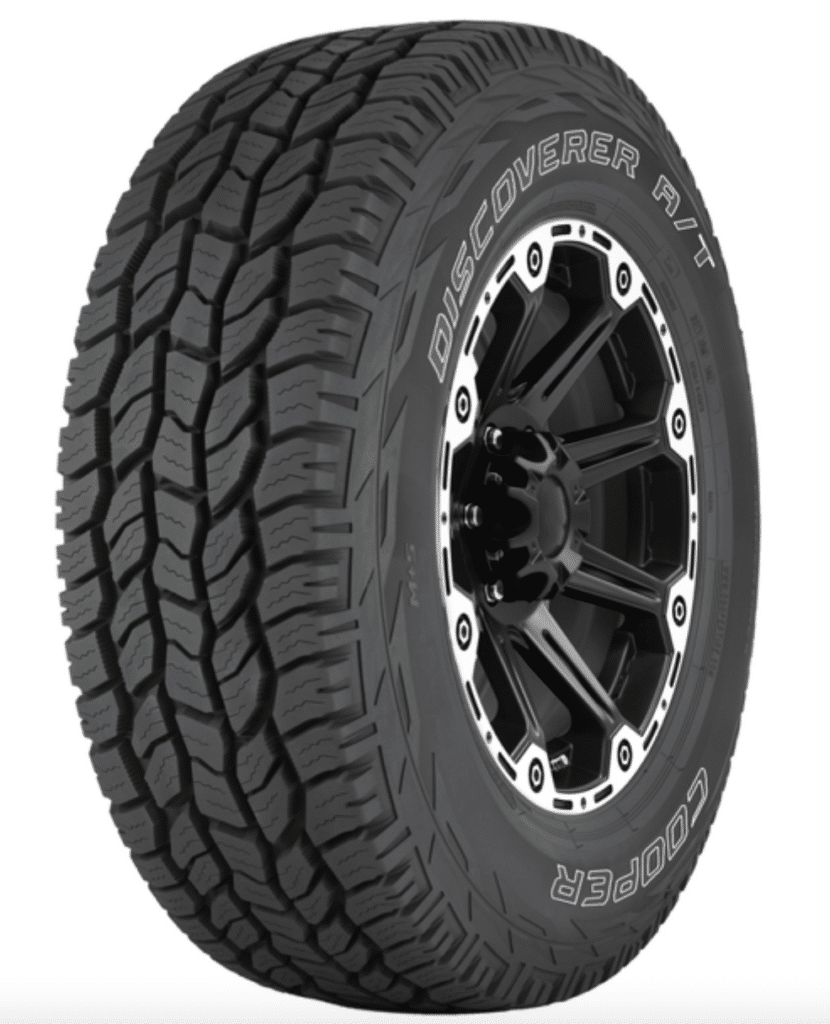
Price Check
Check the price of this tire at the following retailers:
Amazon TireRack DiscountTire PriorityTire SimpleTireDon't know the correct size tire to purchase? Start here!
The Cooper Discoverer is one of the few tires that have the term ‘wet weather tire’ in its name. That should tell you all you need to know about its performance in rainy conditions.
Even though the tire has a symmetric tread pattern, it rolls over effortlessly over wet surfaces and difficult terrains. A maximum load capacity of 2,300 pounds also works in favor of its wet weather performance, giving the tire more control as it’s running through deep water puddles and slick streets.
The presence of grooves within its tread area helps it resist hydroplaning like a champ. Alongside them are the biting edges, helping the tire make its mark on slippery terrain. And the fact that it’s M+S rated means it also has its fair share of sipes to help it remain stable on mountainous and snowy terrains.
Its grooves not only eliminate water from beneath the tire’s footprint. They also offer lateral protection to the tire, minimizing stone retention on the tire’s surface. This self-cleaning ability is the reason why, every time you take this tire to the read, it will show a new, fresh face to the world.
The only issue I have with the Cooper Discoverer is noise. This tire produces a lot of it, especially when you compare it with others in the same category. While the noise might not overwhelm your vehicle’s passengers’ ears, it will still be loud enough all right.
Pros
- Rolls effortlessly over wet surfaces
- M+S rating means it’s able to perform well on slippery terrain
- Good handling with great sidewalls
Cons
- Produces a lot of noise
Frequently Asked Questions
How to choose the best tires for rain?
You might want to pay attention to the following factors:
- Type of tire. All-season and summer tires usually work best in rainy conditions. They have the tread pattern and sticky rubber needed to offer traction and grip on slick and slippery surfaces. Some UHP tires, like the one mentioned above, might do well in rain, too.
- Tire’s tread. Any tire with low tread won’t perform adequately in rainy conditions. Tires with a worn-out tread are also at an added risk of hydroplaning. Their braking distances are also much longer than tires with an unused or slightly-used tread.
- Tire’s size. Confirm with the tire manufacturer that your vehicle’s size is available with them. Things can get pretty frustrating if the tire you’ve ordered – and which is lying in your garage – won’t fit your vehicle.
- Driving style. How you normally drive will determine whether all-season, summer, or high-performance tires will come in handy for you in rain. If you usually drive in challenging conditions, a high-performance tire might suit you more. Otherwise, go for an all-season or summer tire.
- Tire’s Price. Premium tires offer excellent performance, minimize road noise and provide a comfortable ride. But their asking price might blow a hole in your pocket. For this reason alone, mid-range tires will probably work out better for the majority.
What type of tires can prevent hydroplaning?
Rubber tires with grooves in their tread area can effectively resist hydroplaning. The grooves are there to effectively channel water from beneath the tire’s footprint. This makes sure that the tire’s friction with the road surface stays intact, eliminating or reducing instances of hydroplaning.
Are all-season tires good for rain?
All-season tires provide the necessary grip and traction needed to keep your vehicle stable on slippery roads. If you’re searching for an all-season tire for rainy conditions, make sure to compare its wet braking scores with others in the same category. This will let you gauge their performance in the rain.
Do winter tires do better in rain?
Winter tires provide an average performance in rainy weather. If you live in an area where it rains a lot, make sure to look for wet weather tires. These tires have what it takes to offer optimum traction on slick, slippery road surfaces.
Can you use summer tires in the rain?
Summer tires perform excellently in rainy weather. Their tread area is optimized for exceptional road grip, regardless of whether the road is dry or damp. Just keep in mind to replace summer tires when the temperature nosedives below 45-degrees Fahrenheit.
Conclusion
Driving in rain shouldn’t be taken lightly. When it rains, the road’s asphalt gets mixed with water and any oil or grease left behind by leaky vehicles and whatever seeps from the road itself. This creates a surface where tires find it difficult to “hang on” to. Puddles on the road can also give way to hydroplaning.
If you live in an area (like the Pacific Northwest) that receives more than its fair share of rain, it should be a no-brainer to invest in any one of the 10 tires I outlined above. Bear in mind that some of these tires are better at their job than others, so pay attention when you’re choosing.

